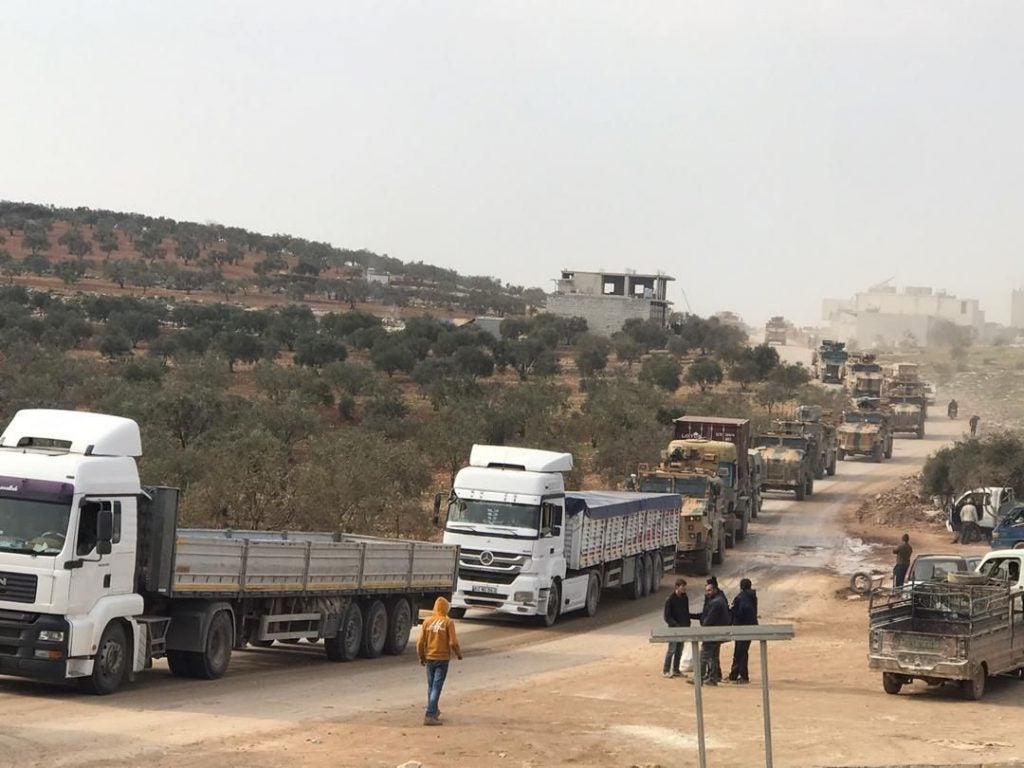Turkey Launches Military Operation in Idlib
On 20th February, the Turkish Army launched a ‘limited’ operation to retake the town of Nayrab in Syria’s Idlib Governorate. The town had been captured in a Syrian Arab Army offensive, which is the only remaining opposition controlled area of Syria.
The operation involved Turkish-backed Free Syrian Army units with armor and artillery support, with Turkish Army commandos leading the way following Turkish artillery bombardment of regime positions in and around the town. Turkish backed forces were able to take the town, but were forced to withdraw shortly afterwards following intense Russian airstrikes and regime artillery bombardment. A second rebel offensive on the 25th was able to retake and hold the town against a regime counter-attack.
Casualty figures on both sides remain unverifiable, although the Turkish Ministry of Defence has confirmed the death of two Turkish Army soldiers in fighting there. The Turkish Ministry of Defence blamed the Syrian regime for the deaths, although the Russian Ministry of Defence later stated that they carried out airstrikes following requests from regime units for support.
The operation follows a continued buildup of Turkish military forces in Idlib, and the downing of two “barrel bomber” helicopters earlier this month. Turkey’s President Erdogan has repeatedly stated that an operation in Idlib was “imminent” following the collapse of the Sochi de-escalation agreement nominally governing Idlib. The agreement called for a ceasefire, but had been continuously violated by the regime with airstrikes and shelling, before completely collapsing with the launch of the offensive.
Media activists claim that two Russian reconnaissance unmanned air vehicles were downed with MANPADS around the time of the operation. Footage taken around that time (embedded above) shows Turkish soldiers at a Turkish observation post attempting to engage what appears to be a Russian Su-24 with MANPADS and failing, with some claims that Russian airstrikes began soon after the failed engagement. It does not appear that Turkish forces in the area have more significant air defense capabilities than MANPADS, contributing to the lack of ability to defend or retaliate against airstrikes. Perhaps in response to this, President Erdogan has requested that the US provide Turkey with Patriot missile batteries, despite a previous high profile snub of the system in favor of the Russian S-400 system.
In response to the development, German Chancellor Angela Merkel and French President Emmanuel Macron made a phone call to Russian President Vladimir Putin, expressing “concern over the humanitarian catastrophe” and calling for four way talks to be held on March 5.
What’s At Stake
Idlib Governorate is home to more than three million civilians, many of which have been displaced (some repeatedly) from other parts of Syria. 900,000 civilians have been further displaced following the latest regime offensive, with many forced into refugee camps along the Syrian-Turkish border in increasingly harsh conditions.
Turkey is the largest host of Syrian refugees, with an estimated 3.5 million Syrians living in Turkey. Popular sentiment in Turkey has begun to turn against the refugees, however, with the opposition Republican People’s Party (CHP) expressing anti-refugee sentiments during their campaigning. The Erdogan government has begun a crackdown on refugees following recent electoral losses, rounding up refugees and deporting them to Idlib. Similarly, the Turkish incursion into Syrian Democratic Forces territory was claimed to have the motive of establishing a “safe zone” for refugees, an unlikely prospect given security and infrastructure issues. A mass displacement of refugees across the Turkish border would almost certainly trigger a second refugee crisis, and potentially result in the collapse of Erdogan’s government.
Too Late?
Erdogan has stated that Turkey intends to drive back regime forces to the lines previously agreed upon in the Sochi agreement. Even if Turkey is able to singlehandedly drive back regime forces, the humanitarian crisis is unlikely to be relieved. The regime military is infamous for its “strategy” of completely destroying towns and cities before “capturing” and looting the remains, meaning that those displaced quite literally have nowhere to return to now.
The United Nations has called for a ceasefire, dubbing it the only solution for the humanitarian crisis. However, ceasefires have been regularly used throughout the Syrian Civil War as opportunities for regime forces to regroup and reorganize following combat losses, if honored at all. Previous announcements of dates for negotiations have similarly driven regime advances to set facts on the ground, seeking to negotiate from a position of strength. Indeed, regime forces continue to gain territory in the south of Idlib.
Rebel forces have now retaken the town of Saraqeb, cutting the M4 and M5 highways linking Damascus to Aleppo, reversing one of the major gains of regime forces. Interestingly, the town was captured in an overnight attack, suggesting a further increase in night vision capabilities available to rebel forces. While a potent bargaining chip, it only is of value if the regime and Russia intend to honor their agreements, something with truly long odds.

